The Moonriver Audio 404 (starting at $3,499 USD) is an integrated amplifier. A very unique one made in Sweden. With a modular design structure that lets users upgrade the modules instead of the entire amp as technology progresses.
Modules that allow us to select the functionality that we want instead of cramming superfluous stuff down our throats: why pay for a phono stage if we don’t listen to records? Why pay for a DAC if we don’t do digital? Getting the specific functionality we need and the ability to upgrade is how we combat obsolescence.
The Moonriver Audio 404 looks like it just arrived from the 1970s. It weighs 12 kilos and it’s big. It looks like an old Sansui amplifier – which is a huge compliment from where I’m sitting. The controls on the front of the amp are laid out like on a vintage amplifier. They are completely intuitive and anyone can operate the amp right out of the box.

I recommend a visit to Moonriver Audio’s website for further specifications and all things technical. Suffice it to say, this is not a run-of-the-mill amplifier. To exemplify: it has five separate power supplies; the power amplification runs in dual mono, and the volume attenuation is the blue ALPS pot.
Regarding the modules: the Moonriver Audio 404 can accommodate two modules — both are optional. There’s a phono module and a DAC module. I tried neither as my turntable was having some issues and the DAC module was missing in acton at the time.
Moonriver Audio plans to release a new module soon, so we get the choice of USB DAC or streaming DAC via ethernet. A very forward thinking approach on the part of the manufacturer.
About the volume control: it is a high-gain control so before you press ‘play’ on whatever source you use, and whatever speakers you employ, turn the volume all the way down.

The guy who built the amp and started Moonriver Audio, George Polychronidis, started out as a service technician. He comes from an interface/industrial design background and has been working as a hi-fi tech in Sweden since 2012. It is from this background that he created the 404:
“I HAVE DESIGNED AND MANUFACTURED MANY CUSTOM AMPLIFIERS, PREAMPLIFIERS AND PHONO STAGES USING TUBES OR SOLID STATE CIRCUITS FOR PERSONAL USE OR FOR CERTAIN CUSTOMERS. LATER, I STARTED WORKING AS A TECHNICAL ENGINEER. THE CULTURE OF REPAIRING AND RESTORING, MADE ME WANT TO CREATE SOMETHING THAT IS EASY TO REPAIR AND SERVICE. THIS IS SUMMARIZED INTO 2 THINGS: THROUGH-HOLE COMPONENTS FOR EXTRA RELIABILITY AND BETTER SOUND, AND A REMOVABLE BOTTOM IN ORDER TO HAVE ACCESS TO BOTH SIDES OF THE PCB, ON THE FLY, WHICH IS VERY IMPORTANT IF YOU WANT TO MAKE MEASUREMENTS OR TO REPLACE SOMETHING WITHOUT DISASSEMBLING THE WHOLE UNIT. THIS INCREASED THE COST OF THE CHASSIS OF COURSE BUT IT IS WORTH IT. EVERY HI-FI UNIT FROM THE 70S OR 80S WAS LIKE THIS BECAUSE IT WAS MADE TO LAST AND TO BE SERVICED WHEN AND IF IT WOULD BE NECESSARY. TODAY, EVEN UNITS WITH COST OF SEVERAL THOUSANDS OF EUROS DON’T HAVE A REMOVABLE BOTTOM OR ANY KIND OF DESIGN FOR SERVICE AND MAINTENANCE, THEY JUST DON’T CARE. COST IS MORE IMPORTANT.”George Polychronidis, Moonriver founder
Sound
I started with an affordable loudspeaker, the Fyne Audio F-302 (€499) floorstander. I had driven the F-302 with the Schiit Vidar and the Cayin HA-1A MK2 (€799) preamp. There’s a great and comprehensive review of the Cayin here. In this configuration, the F-302 were very alive – but slightly unwell, with an insistent/overly enthusiastic top end that grated the ears, even at sensible volumes.
The Vidar is a great amp, especially at the ridiculous price of €789, but not the most subtle. Miles Davis’ horn had a coarseness that wasn’t right. Precisely not brassy. Rather: grainy, and distorted. The Cayin pre-amplifier toned that down a bit, but not enough.
The F-302 and the Vidar are not a good match. The Vidar is a forceful amplifier with a serious low end. It will wake you up in the morning and has more than enough power for any of my speakers. I love it with something like my Buchardt S400.
Things changed abruptly, as these things do, when I swapped in the Moonriver Audio 404. Here we must remember that the 404 has half the power, is twice the size, and is triple the price of the Cayin-Schiit combo. So not exactly a fair fight.

Throughout my listening I used my wonder-box of choice, the Hugo 2Go (£3450), streaming Tidal via Roon.
From the very first note: the Moonriver Audio 404 was much more refined than the Cayin-Schiit combo. In every way. On Brian Eno’s (with Jon Hopkins and Leo Abrahams) Small Craft on a Milk Sea, there’s a tenderness through the 404 that was missing via the Schiit/Cayin. Sometimes Small Craft… is a delicate record, sometimes violent, but always, it seems, unnerving.
The Moonriver Audio 404 translates that disconcerting quality much more effectively. The music comes from a deeper, darker void. That is partly because the insistent top-end from the Schiit/Cayin combination evaporated. Any sibilance is gone, and a smooth(er) treble extension takes its place. In the blink of an eye, the F-302 sound much more expensive than they are.
It’s a curious thing when hardware doesn’t match our expectations. Looking at the Moonriver 404 and its retro-styling, the way it digs out detail is frankly surprising. Based on the Sansui-esque aesthetic I was a expecting a warm and forgiving 70s sound. But the sound out of this unadorned bulky box is very articulate and refined.
The amplifier unveils a lot of detail, but it’s never clinical. Never. It’s incredibly open and clean, but not glass-like. The sense of ambient space and clarity is impressive. It’s welcoming and warm with a tone and timbre that, for me, is damn near perfect. It has a way a opening up a recording, making it seem as if, for the first time, you’re hearing it like it was supposed to be heard, while also giving the impression that you’re returning home to your favorite stereo and something you’ve heard a million times. Music sounds like you’re 14 again.

I’ve recently rediscovered Miles Davis’ E.S.P. which I had sort of forgotten. Funny how that works. The 404 and the F-302 make the music sound so vibrant and alive without being overcooked. The bass is tight, the treble is crispy-smooth, and there’s a lushness in the midrange that engages one so intensely with this recording.
I can’t remember when E.S.P. sounded this right. There’s some serious synergy going on here. It’s gritty and punchy; it sounds fresh and flurrying, and always welcoming. The real question is this: how can the Moonriver 404 make a pair of entry-level floorstanders like the F-302 sound this good?
The 404 has a tonality that leans slightly to the warm side, but concurrently it appears neutral – whatever that is – because it seems to tell the truth. Can you be a great storyteller and tell the truth? If that’s possible, that is what the 404 does. I feel more connected to Miles Davis through the Moonriver and the F-302 than I ever before.
Moving up
Why are the Moonriver 404 and the Schiit Ragnarok II (€1499) the best amplifiers I’ve tried with the Buchardt S400? My answer is this: Both amplifiers have a magical midrange and the midrange is exactly what the otherwise splendid Buchardt S400 are slightly missing.
Driving the Buchardt S400 well is not the only common denominator between the Ragnarok II and the 404. They are both from companies who have defied the trend of manufacturing overseas to save money, and they both employ modular architecture.
The Moonriver is significantly more expensive than the Schiit and you can hear it. The Ragnarok is a bit duller and a bit less clean. The Moonriver is clearer; it’s better at portraying space in a recording.
It sounds a great deal more open, it’s airier, and has a crispness that I really like. It’s also significantly more dynamic, and seems to effortlessly illuminate a greater portion of the music. I feel more connected to music through the Moonriver than through the Schiit.
The Ragnarok II is about half the price and a bargain at its price. And it has a very good headphone amp onboard. Still, the Moonriver 404 is a clear step up and a clear recommendation over the Ragnarok II, if your wallet permits.

Time to plug in another comparable integrated amplifier. Enter the Exposure 2510 (€1850).
The pattern from the Ragnarok repeats itself. Compared to the Exposure 2510, the Moonriver Audio 404 is clearer. It digs out more detail. It’s much crisper and open sounding. There is more clarity and information in the midrange. It makes music on my Buchardt S400 sound more vibrant and alive.
The Moonriver is more dynamically alive than the Exposure. Again, the Moonriver is more expensive and it sounds that way. But the Exposure isn’t bad. It’s just a bit more rounded and tonally warmer and not as good a fit with the Buchardt loudspeakers.
The top end is more extended with the Moonriver but not as smooth as the Exposure. The Moonriver made the F-302 sound perfect and open without the shrill treble. The Exposure and F-302 might tango even better.

Above everything else, the Moonriver Audio 404 plays music. It’s airy and clean, and full of life — and there’s an all-important warmth beneath (or above) which characterizes my favorite gear. We need depth, richness, tonal color and heft, to tilt us away from the clinical. We need balance. In everything. I find this amplifier to be expertly balanced between cerebral and emotional listening.
Alpha and the Omega
I didn’t have a lot of time with the Moonriver 404. Not as much as I would have liked, anyway. In the middle of listening, a pair of Super 8 Modern Monitors ($1495) from Omega Speaker Systems showed up. I put those in a room with an old amp and burn-in commenced. And then I forgot about them in the context of the 404.

On the day the courier was due I remembered them again. I dragged them into my listening room and plugged them in instead of the Buchardt S400.
The see-through capabilities of this amplifier are simply amazing. The Omega are a single-driver design and sacrifice some low-end grit and extension for midrange transparency. Their central image is even better than the already formidable Buchardt S400.
What the Omegas reveal about the Moonriver 404 – and one of the reasons I have invested in them – is how transparent/clear/refined this amplifier really is. The Exposure 2510 is a wonderful amp but the Moonriver 404 is more vivid, better balanced, and more transparent. But what really separates them is the manner in which the 404 allow the Omega loudspeakers to portray music with texture.

The Moonriver 404 did something special with every pair of loudspeakers in my home. This is a confident sounding amplifier that engages you from the first note and never lets go until the decay of the final note begins to dissipate in the air. That’s very rare for any piece of hi-fi equipment.
The treble in the Fyne Audio F-302 was reined in and those budget floorstanders played Miles Davis with momentum and pace and sounded better than they have any right to at their asking price.
The Omegas were utterly transparent/detailed/refined, with a midrange texture that is perhaps my favourite thing in music reproduction; that tangible sense (a feeling not a sound) of a bow on a cello, of guitar strings vibrating in the room with you, of a voice being almost corporeal.
The first time I plugged in the 404 it was revelatory. Clarity, insight, momentum, crisp smoothness. But when it had been in my system for a while and it was time to say goodbye, it was harder than usual to let it go. Other amplifiers – even my beloved Croft Acoustics separates – sounded slightly off. Better than Croft? That is high praise indeed.
For modularity, for repairability, for extraordinary sound quality: a Green Award effortlessly earned.

















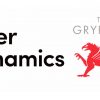
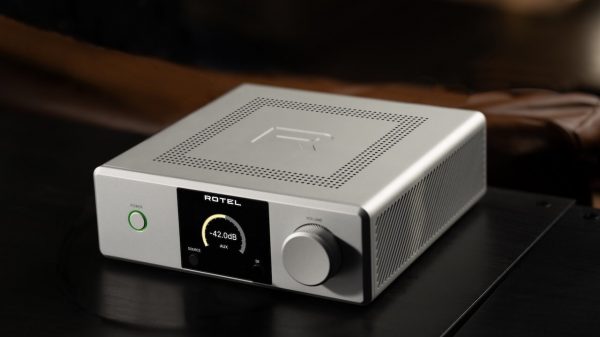
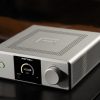
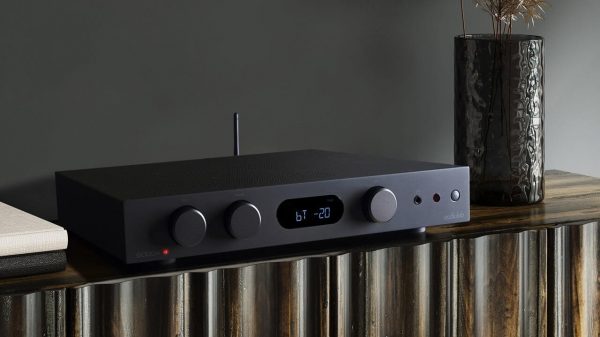
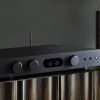

















Guy Grundy
February 25, 2021 at 7:36 pm
Ah memories! Sansui….had a mighty BA 2000 power amplifier many moons ago complete with vu meters.Effortless (warm) sound
Once a titan of the hi fi industry…sadly no more.
Mike G
November 16, 2021 at 5:26 am
Thanks for the comparison to the Exposure 2510. Choosing between Moonriver and 2510 for my Dynaudio Special 40s
Jeroen
December 23, 2021 at 12:14 pm
I also own a pair of s400’s and bought a moonriver 404 not so long ago. Very happy with this combination!
Ian White
December 23, 2021 at 12:40 pm
Jeroen,
It’s a very solid product. I know a lot of people looking at in for 2022.
Ian White
chris
November 28, 2022 at 8:15 pm
Your final mention of Croft me itching for a trial of this Moonriver 404. I’ve been using the Croft Phono Integrated for several years. But the Moonriver 404 (non-reference) has definitely caught my eye. Switching from the Croft to the Moonriver? Worth it?
Ian White
November 29, 2022 at 1:37 am
Chris,
Completely different sound. The Moonriver has more power and features,though.
Glenn Croft just passed away about 10 days ago so all of his products in the field as now in “demand” but he is not alive to service them.
Ian White
Chris
December 1, 2022 at 5:44 am
What?! That is terrible news! What a loss.
With that information, I do not plan on switching. Maybe I’ll add to the amplifier stable, but my Croft is in my home to stay.
I think I’d have to spend a significant amount of money to get an amplifier that makes me smile as much as the Croft makes me smile.
Heck of a loss. Thank you for the reply.
Greg M
October 10, 2024 at 5:13 pm
Hello Ian, very curious how the 404 entry amp compares to the Hegel H95, as I’m contemplating the Moonriver as an upgrade. Would appreciate hearing from you on these two amps. Thanks,
Greg
Canada
Ian White
October 10, 2024 at 5:52 pm
Greg,
Depends on the speakers and sources on the other end.
IW
Greg
October 16, 2024 at 4:12 am
Thank you for your reply Ian. Streaming with a Lindemann Limetree Bridge utilizing the Internal Hegel dac, with Tidal. Analogue is a Rega P3 with Exact cart, a Rothwell Simplex (phono – a real gem), interconnects by Audio Sensibility, and cabling with Tellurium black 2. My music listening is primarily jazz with sone new age and occasional light blues. Speakers – Totem Arro, and looking at a pair of Omega stand mounts. Look forward to your thoughts. I thoroughly enjoy your wonderful articles. Many thanks,
Greg,